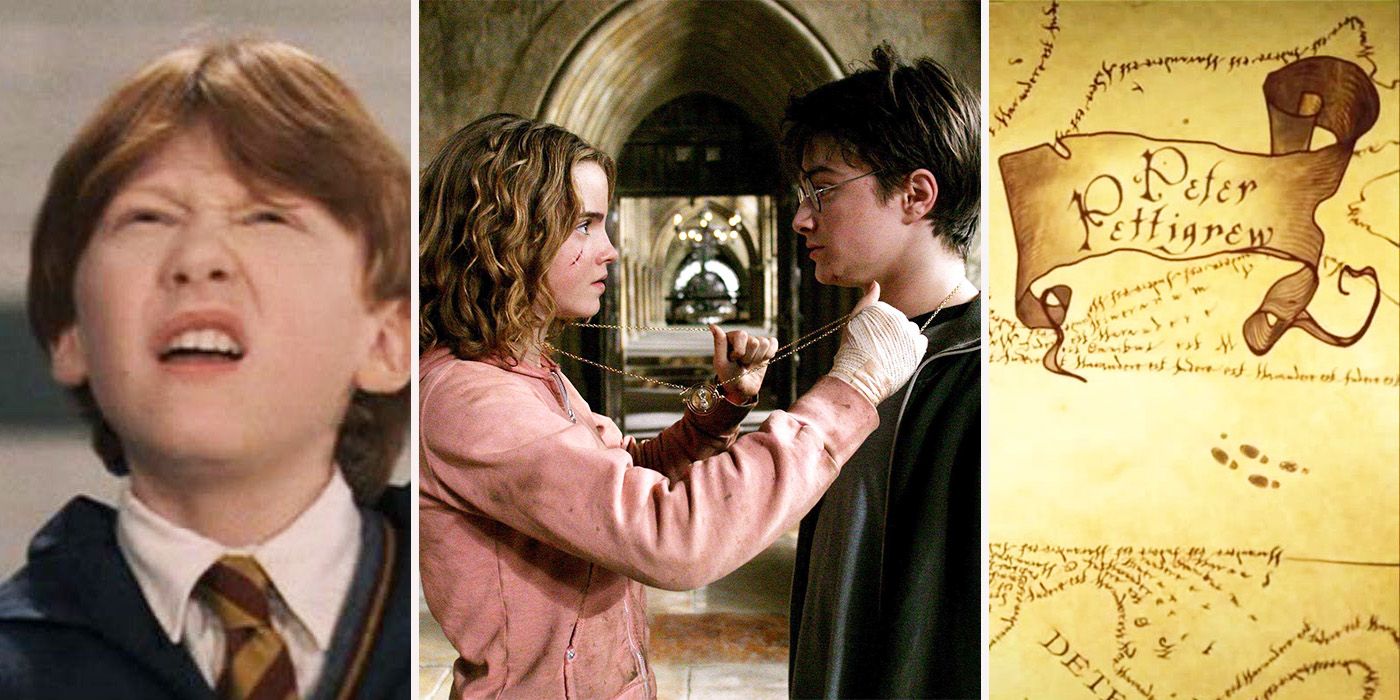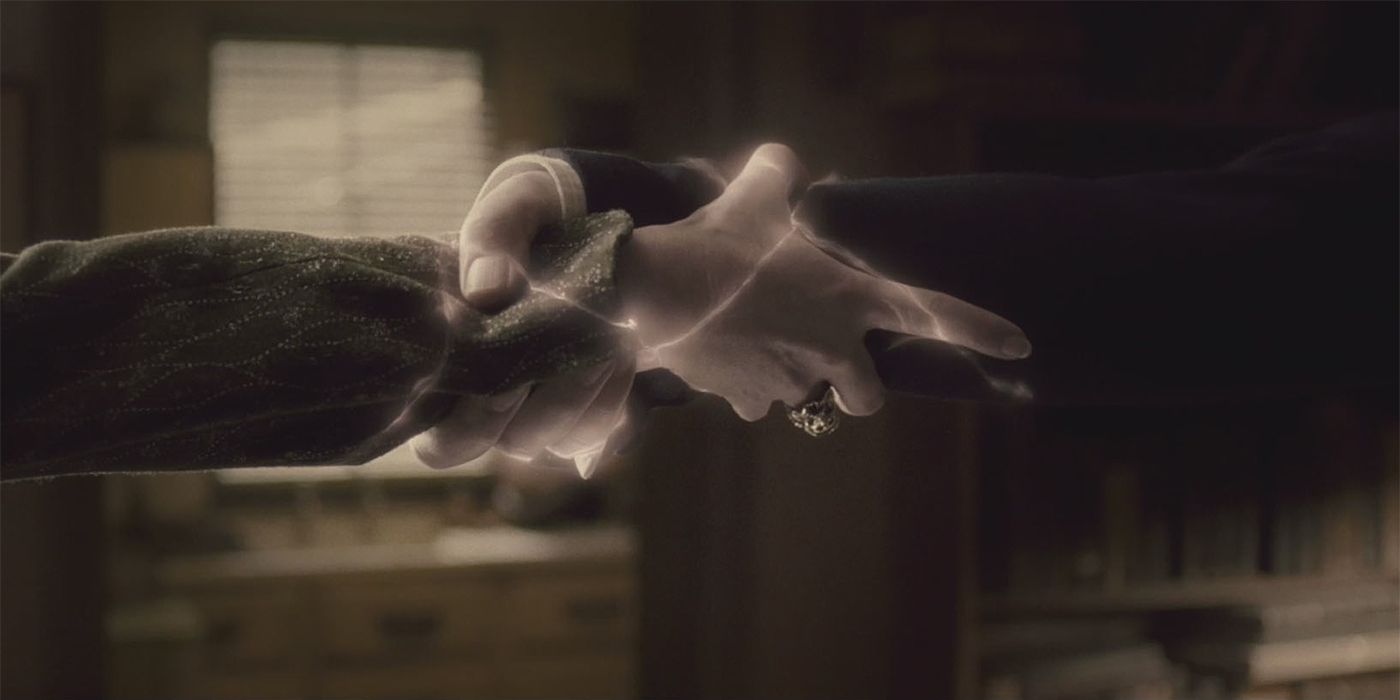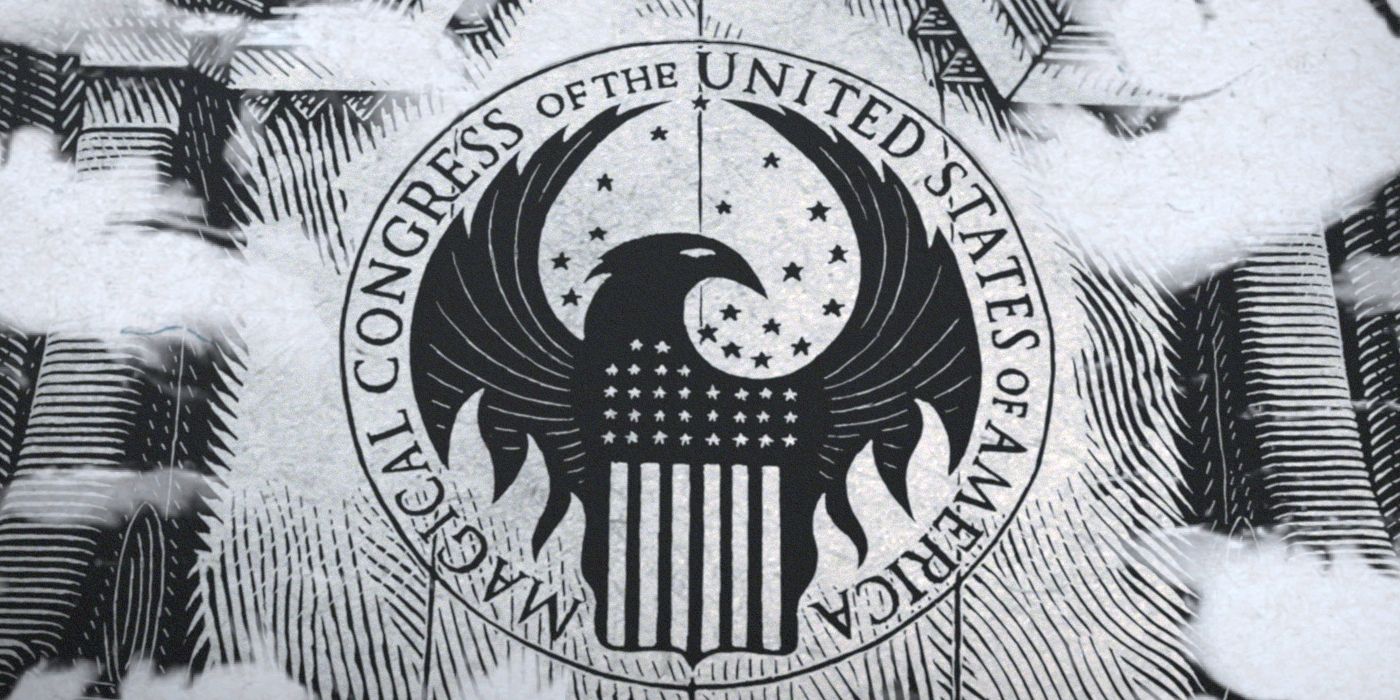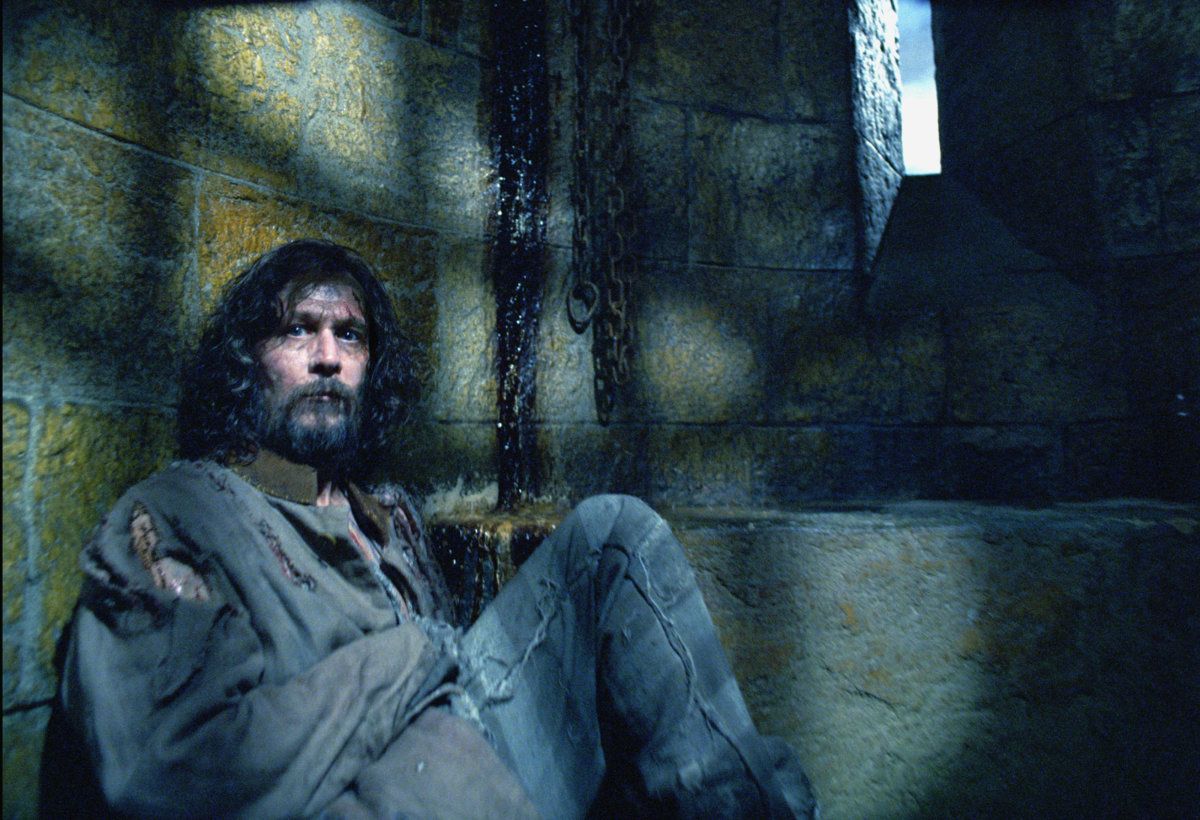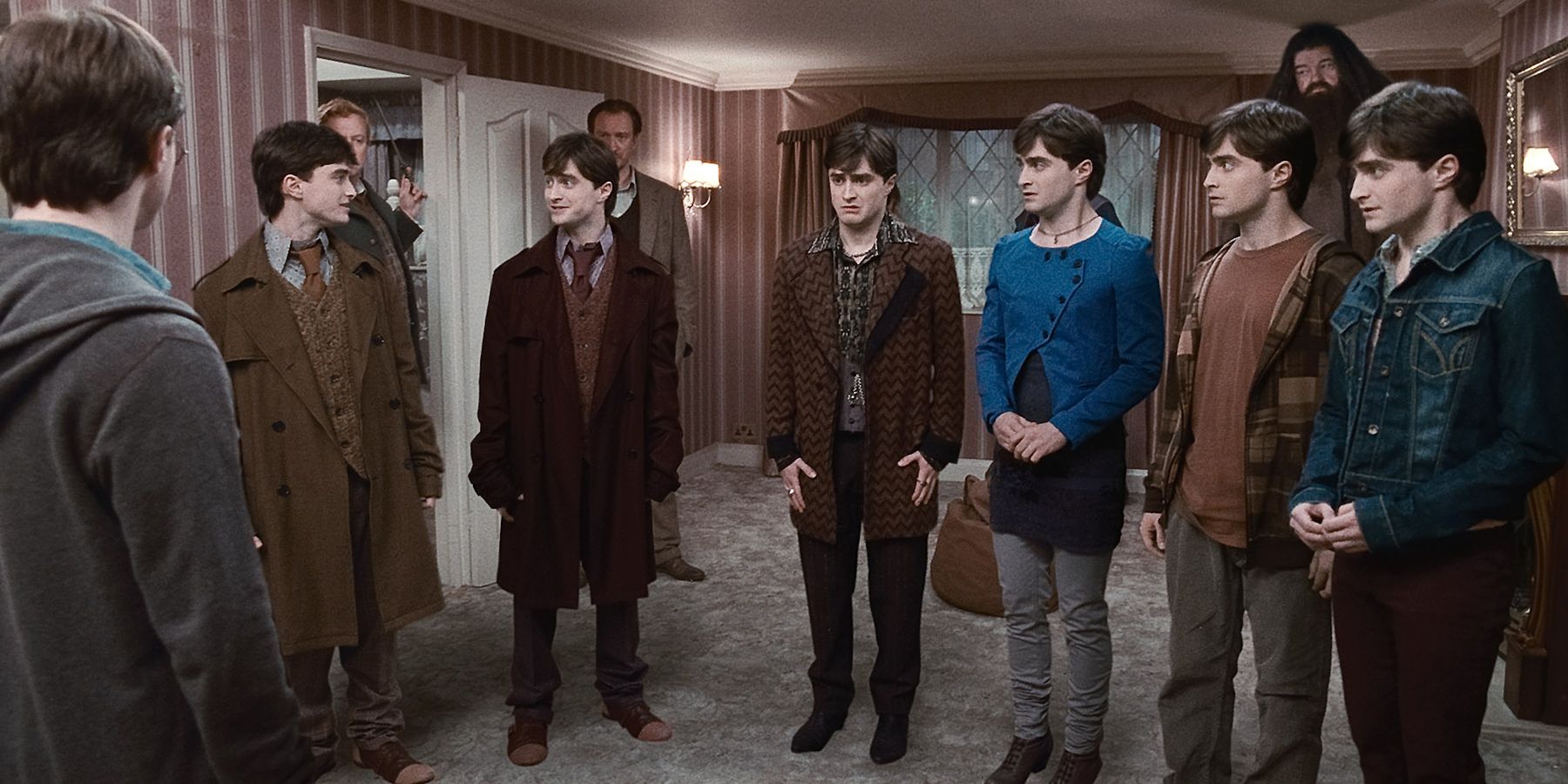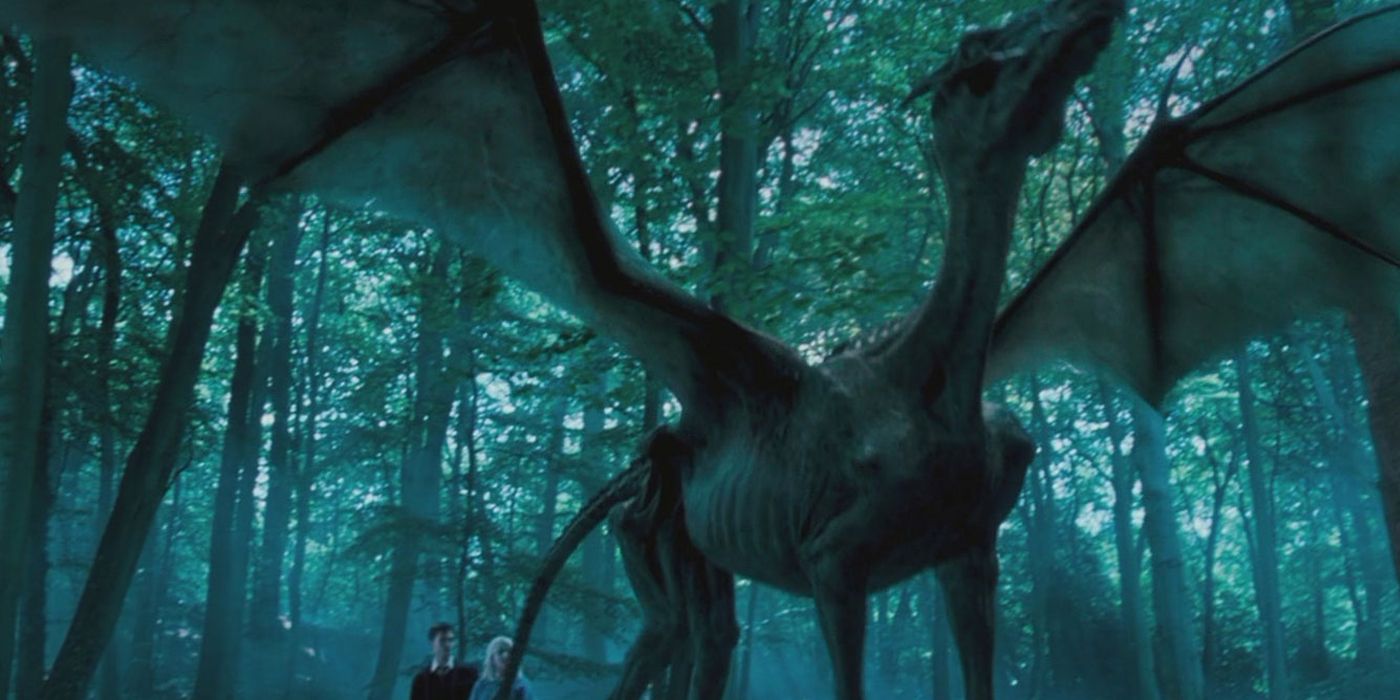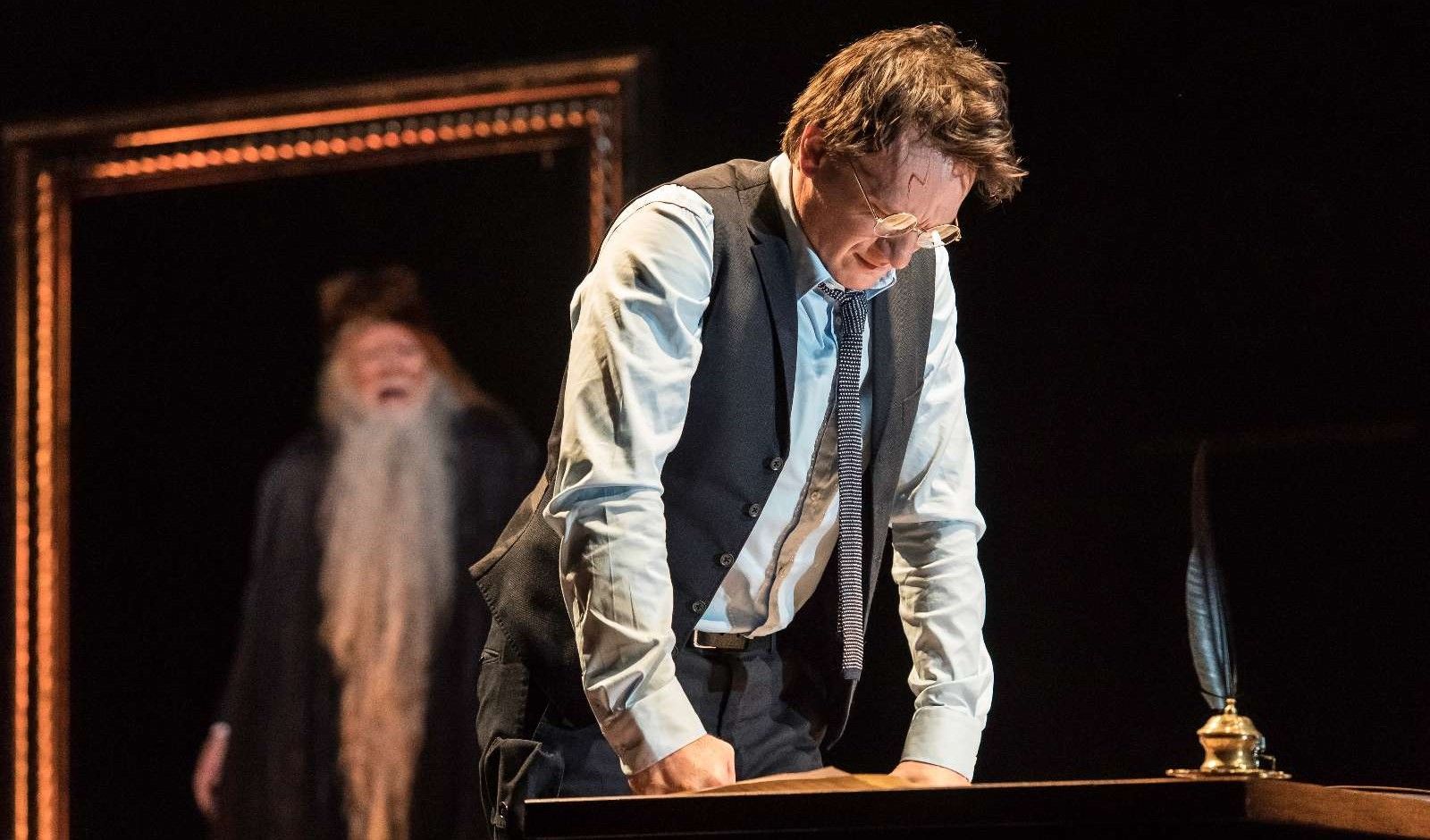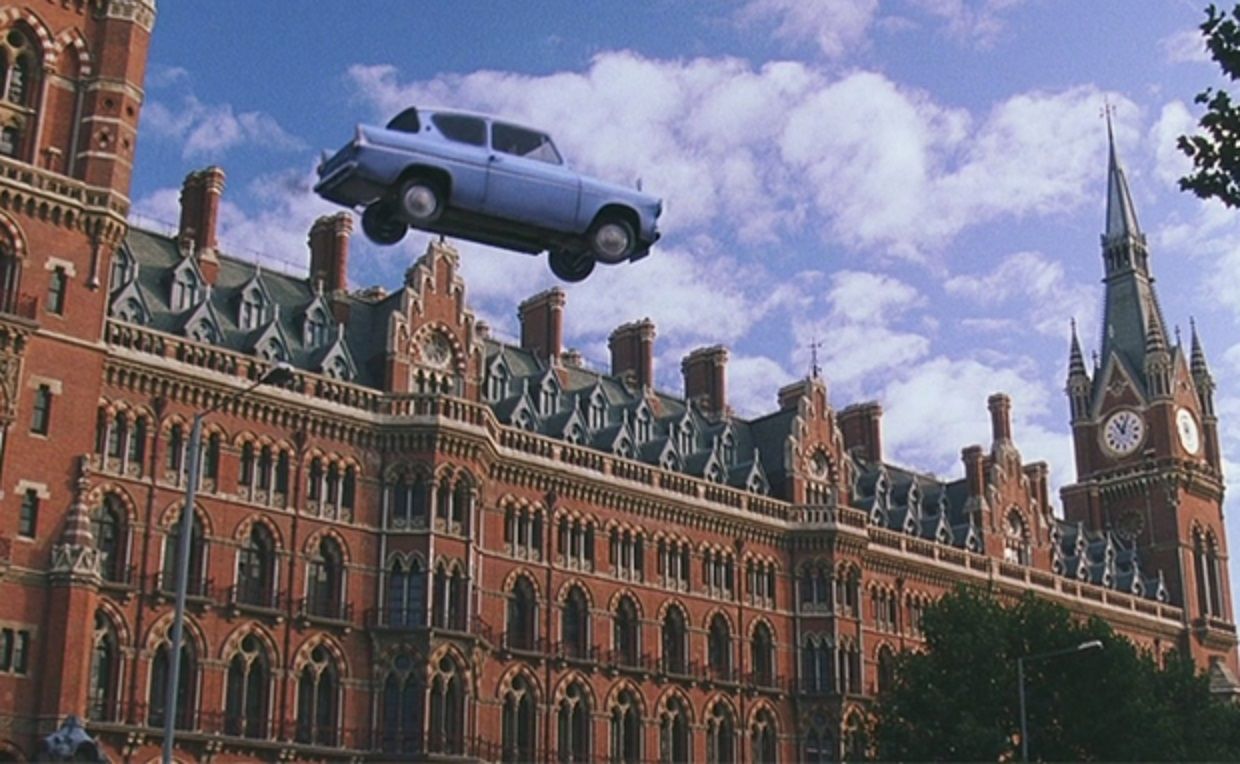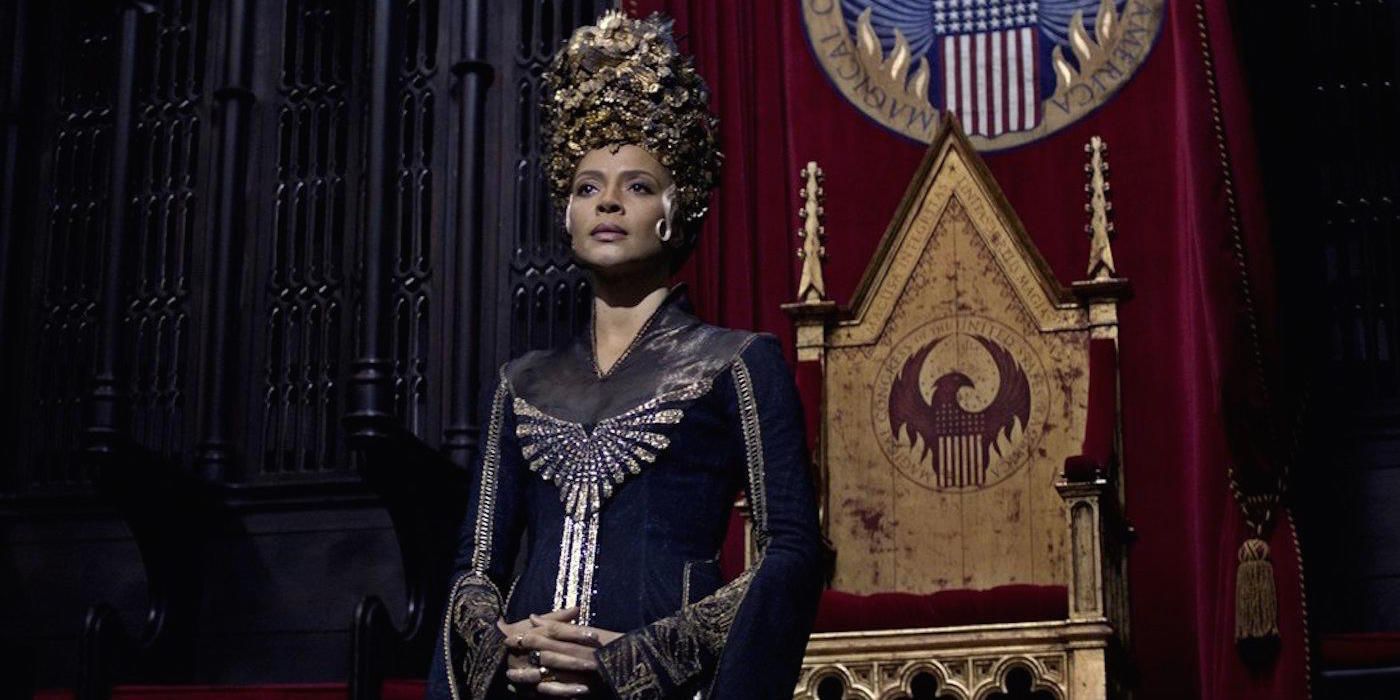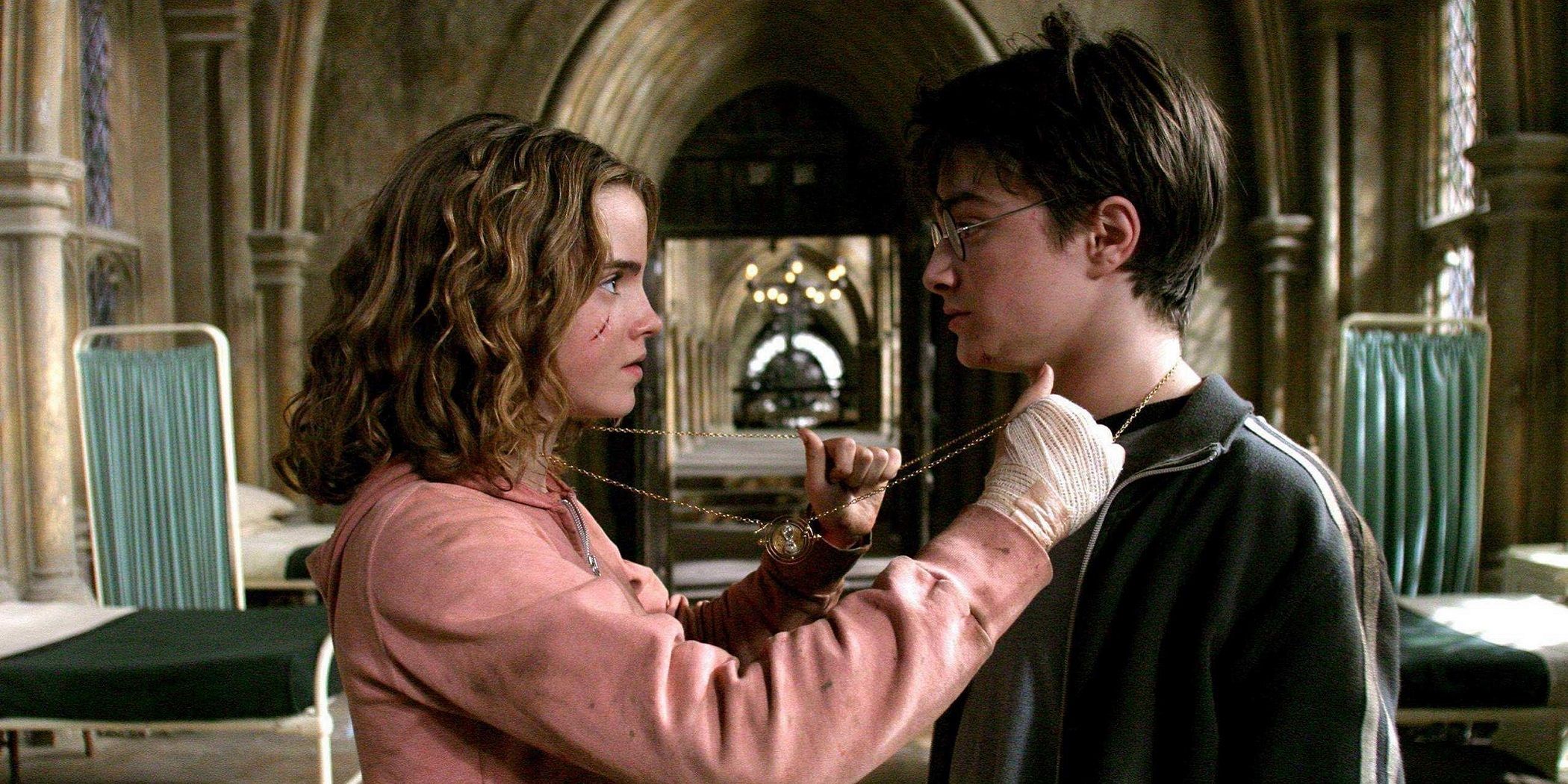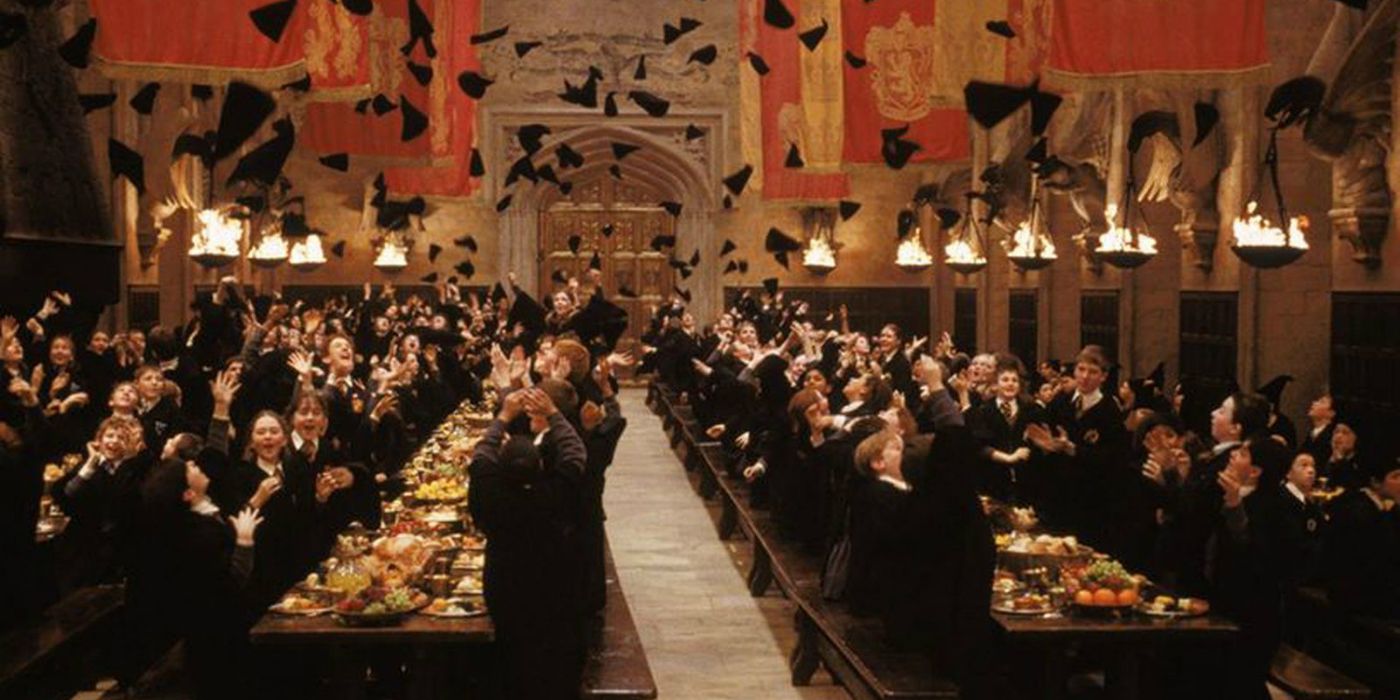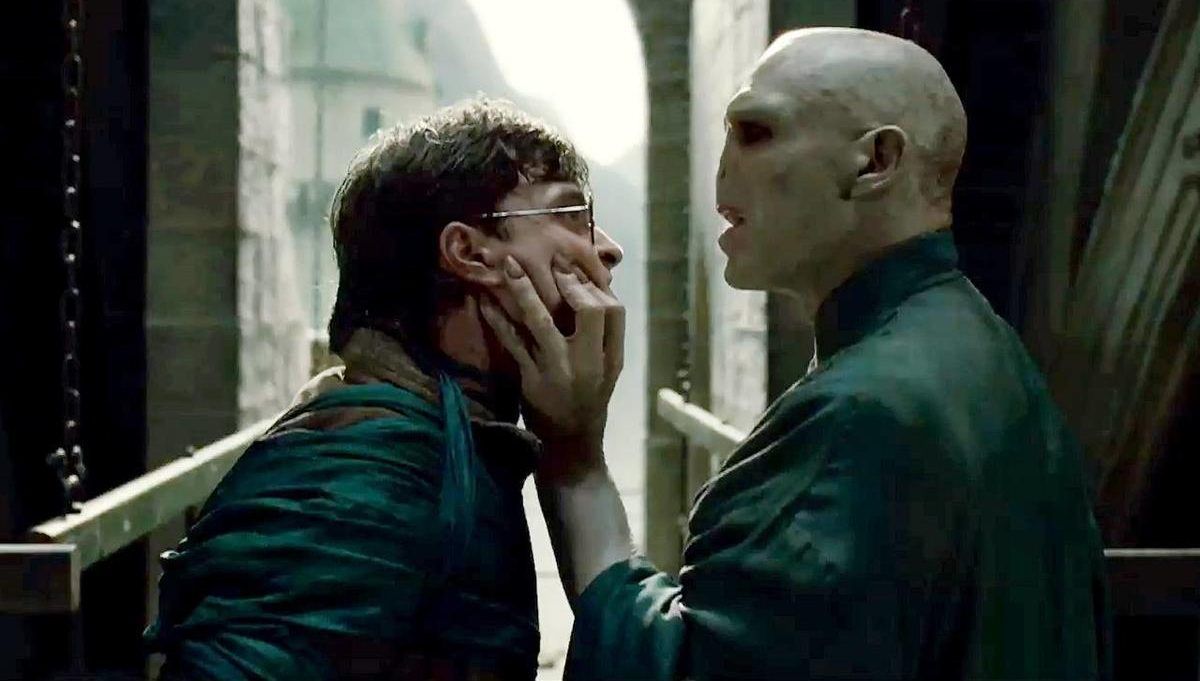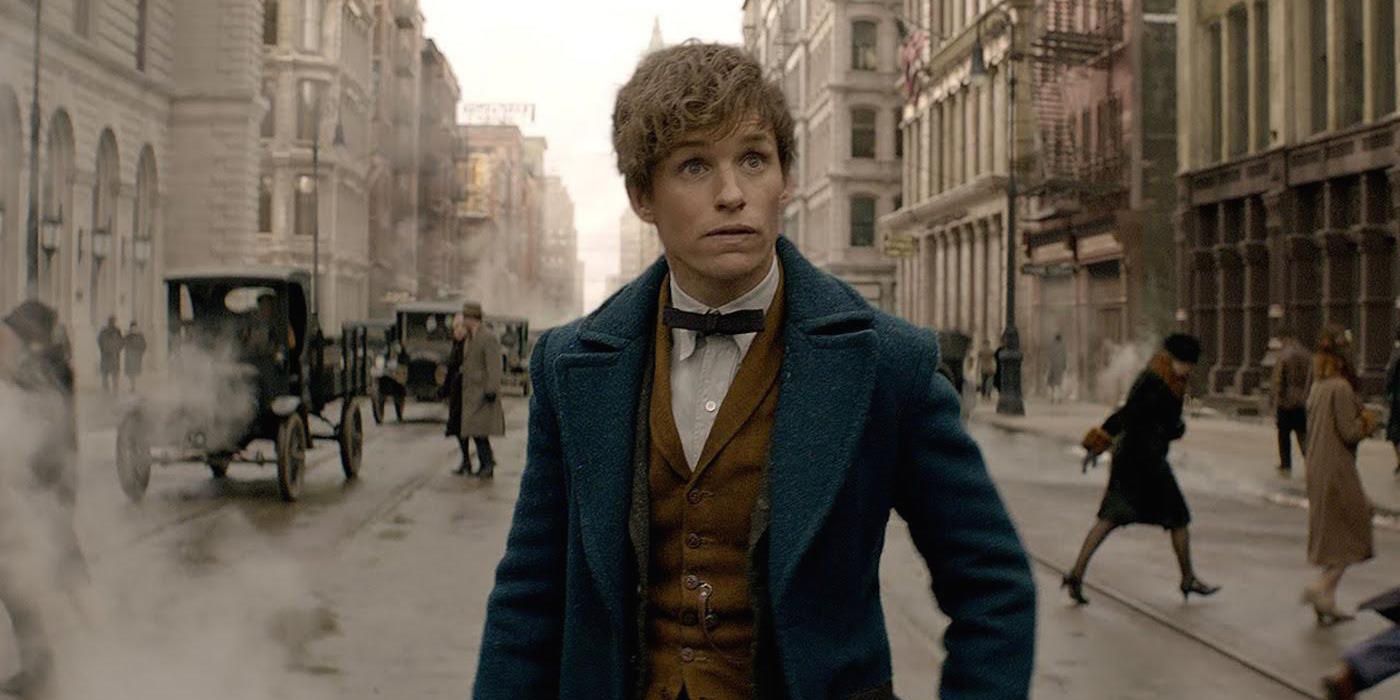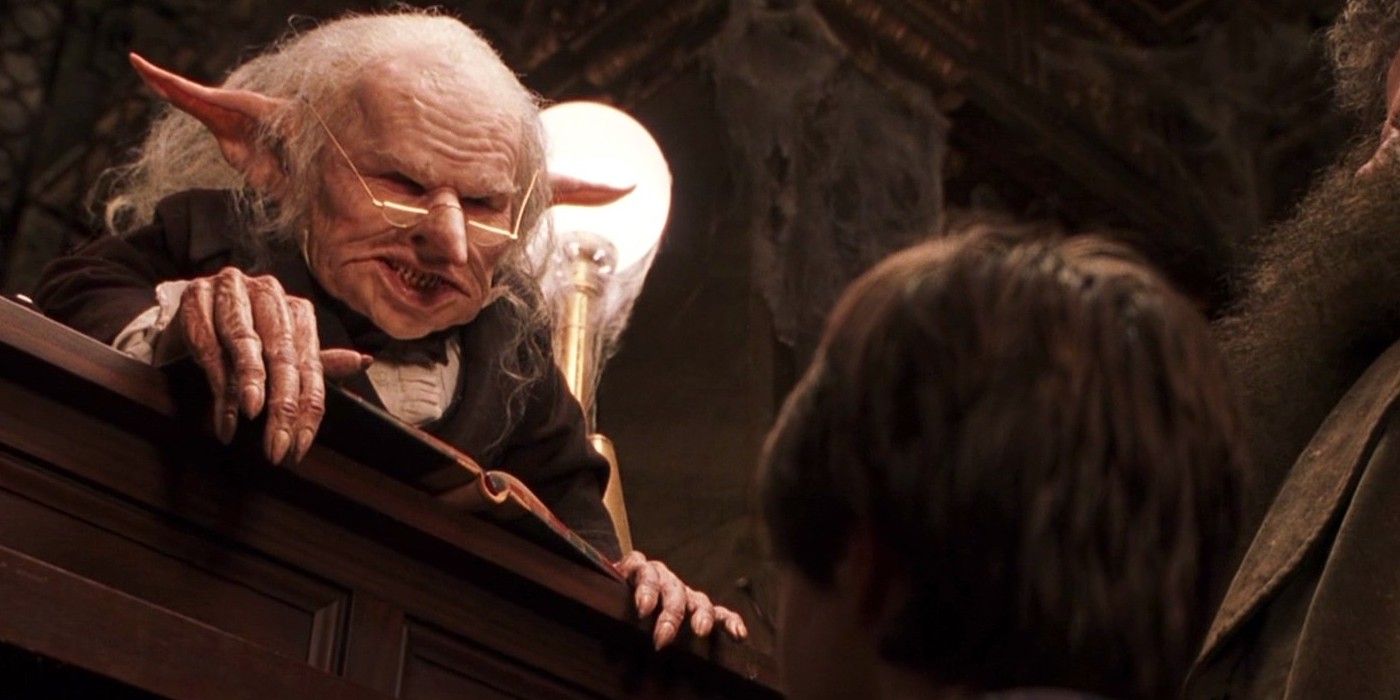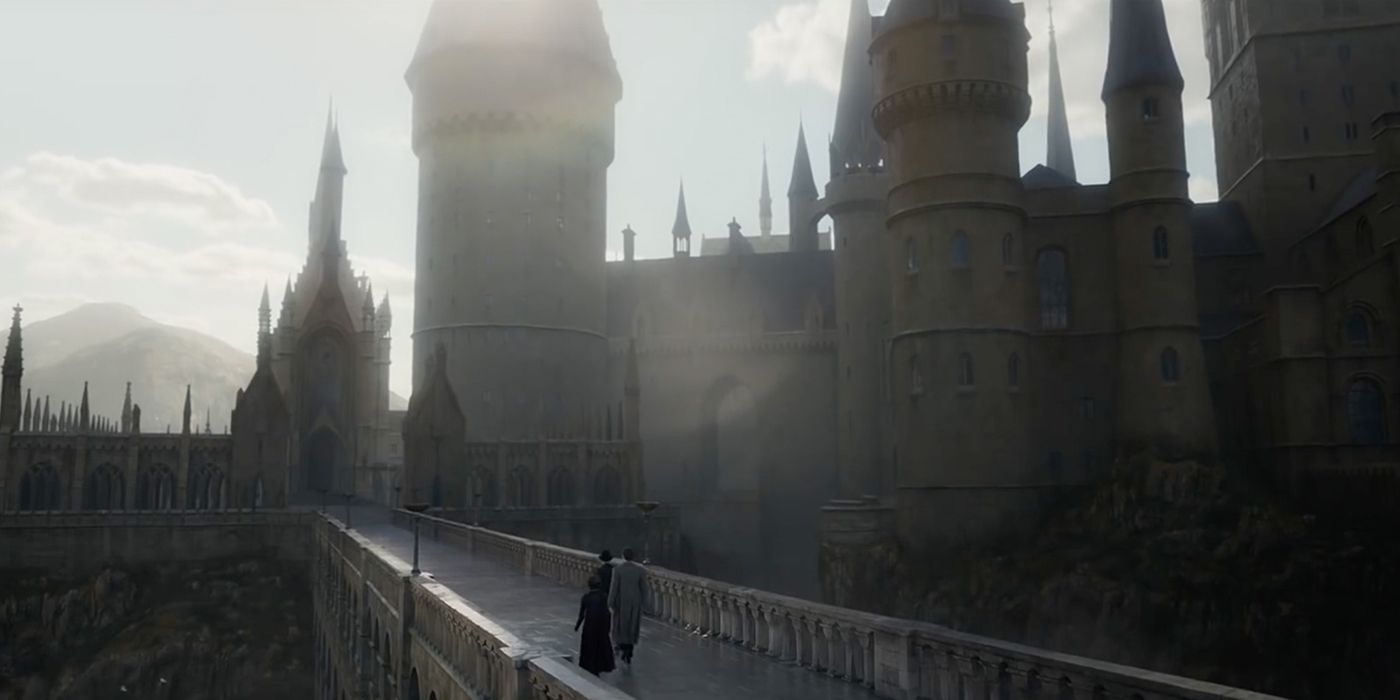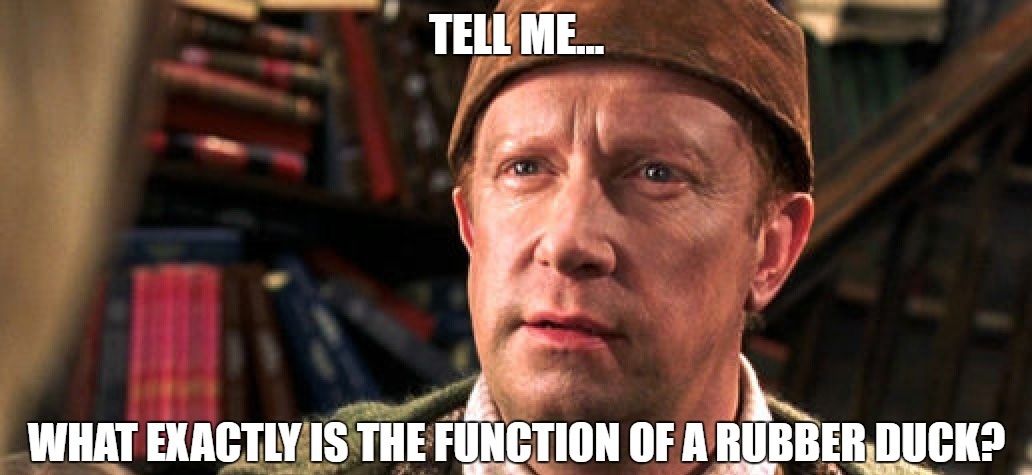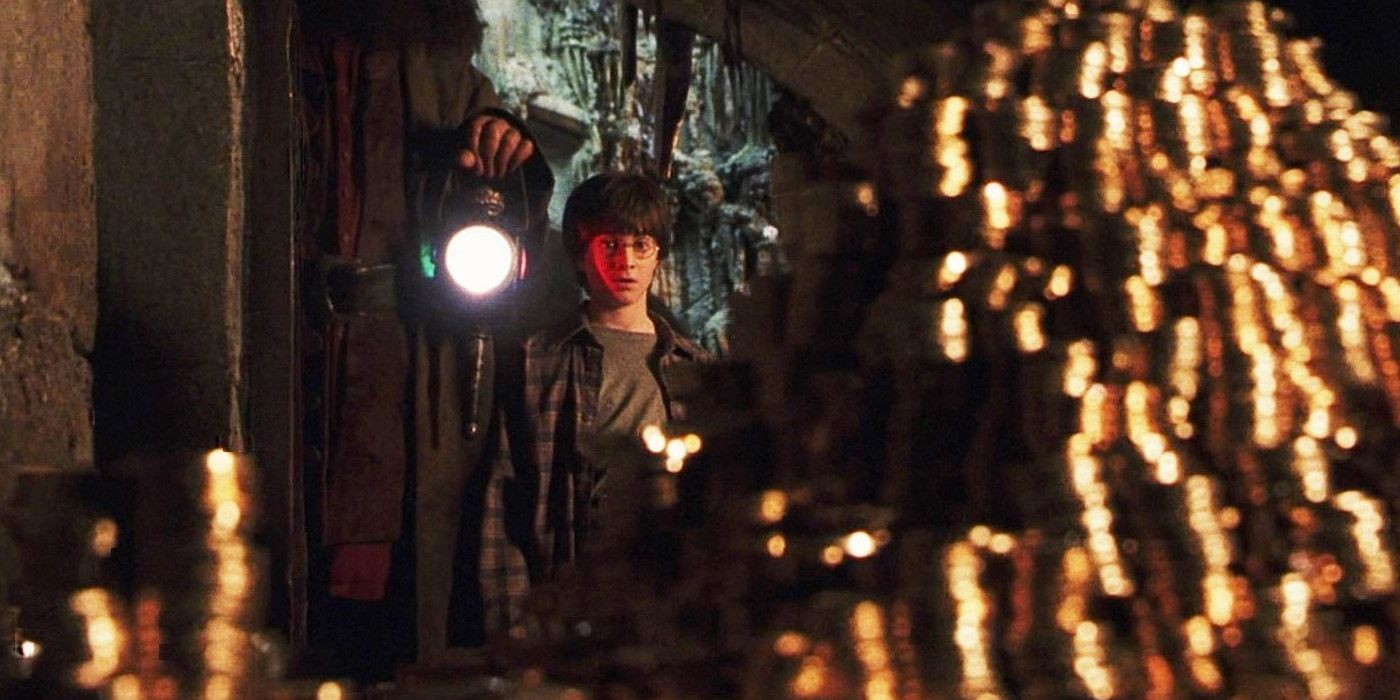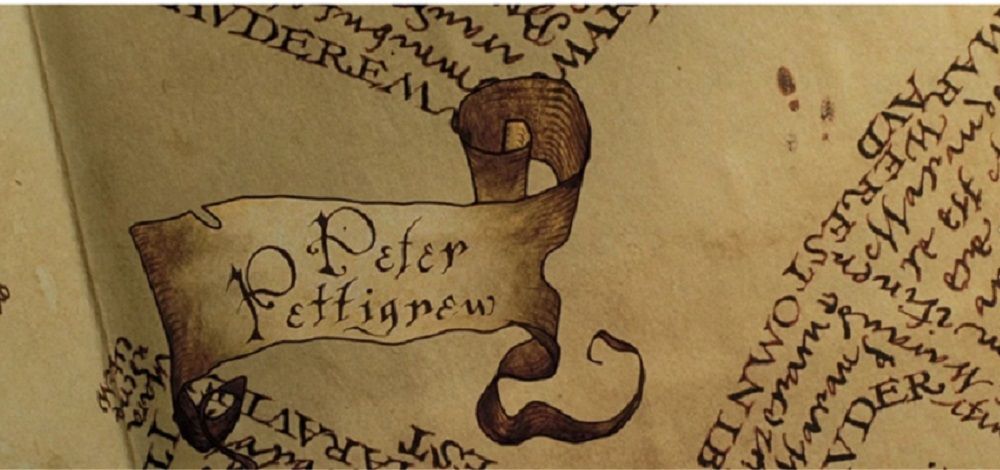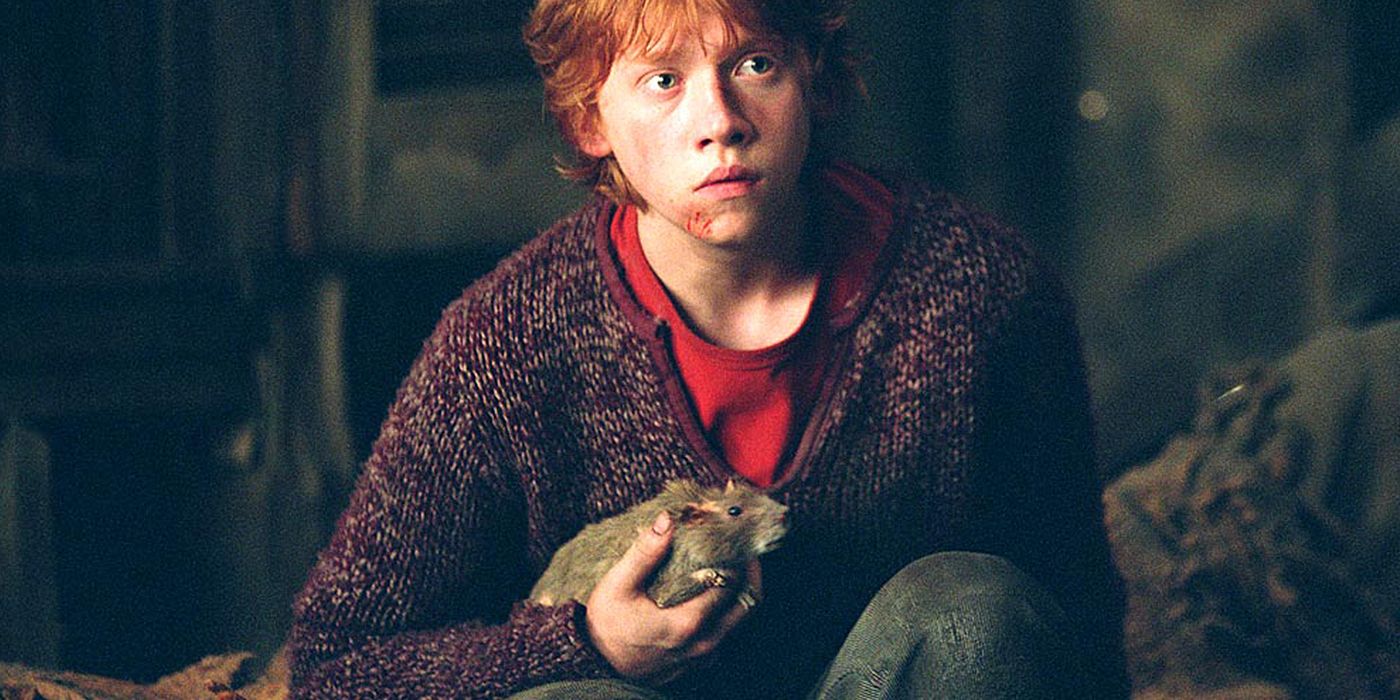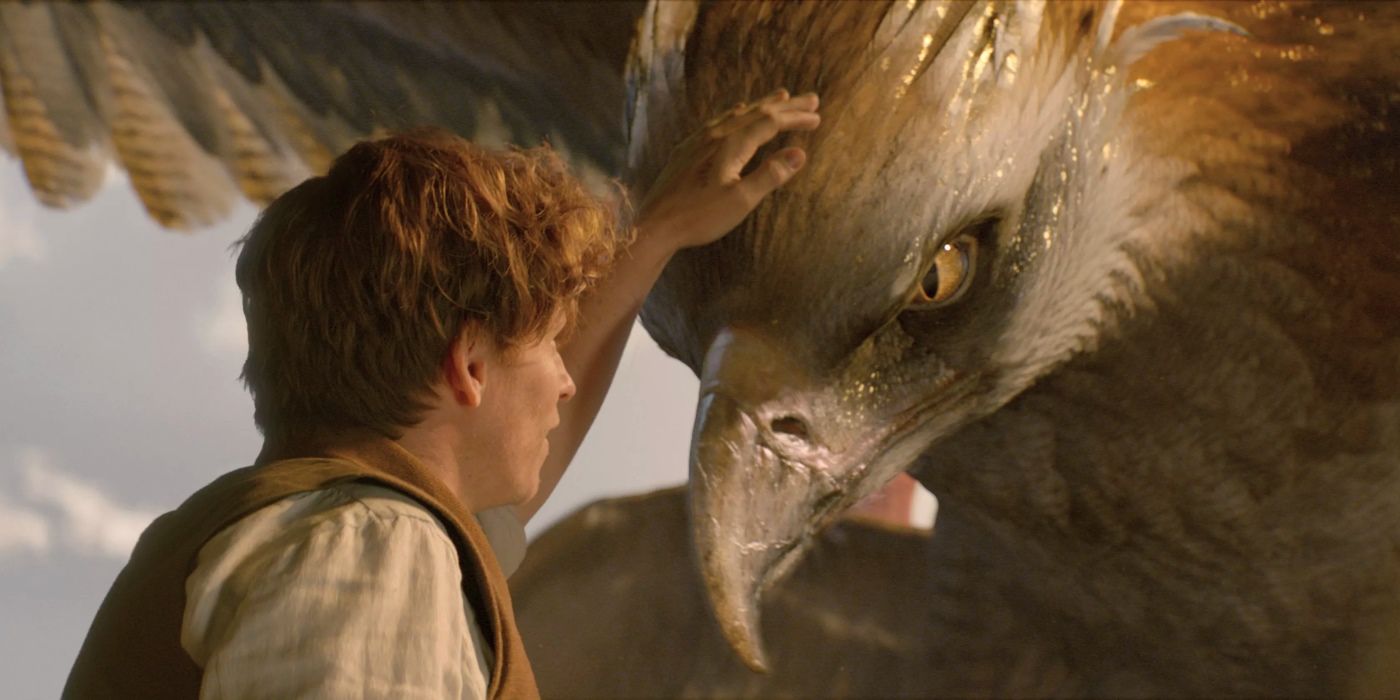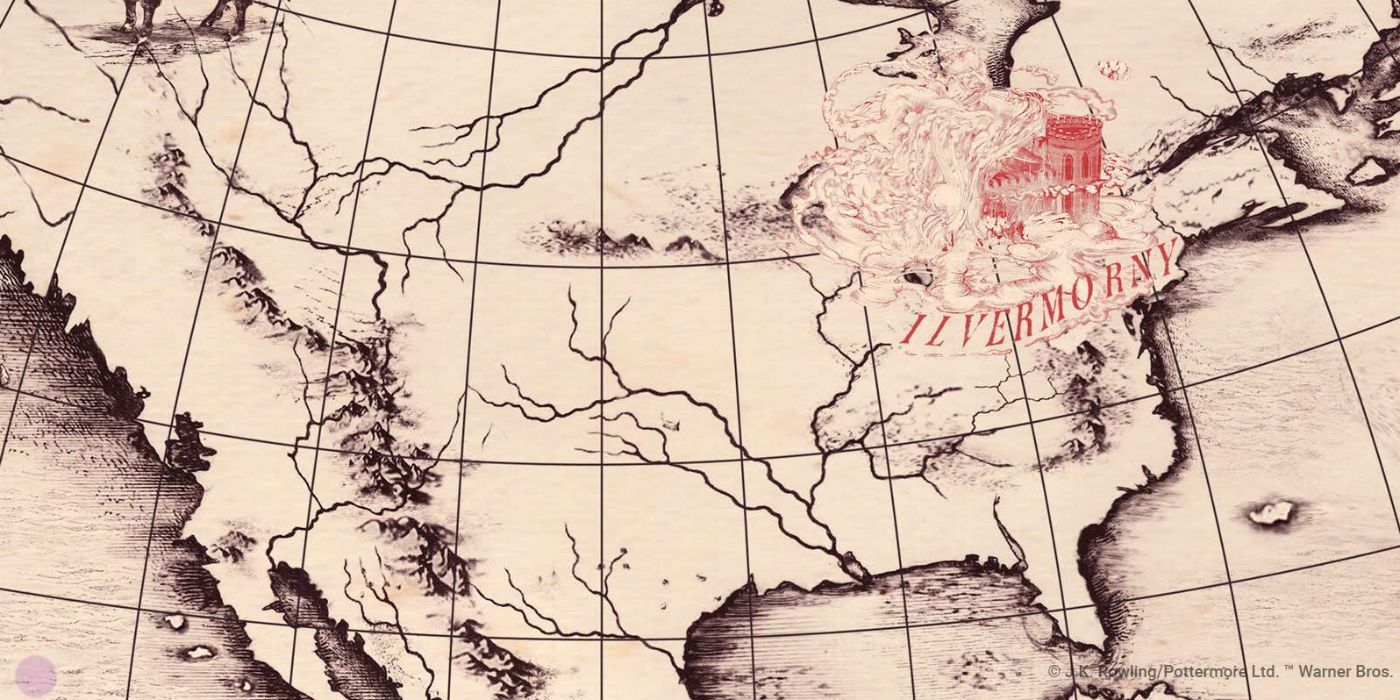We’re slowly getting closer to the release of Fantastic Beasts: The Crimes of Grindelwald. As the movie premiere date nears, some fans are going back to the movies for a refresher. Or just a periodic rewatch, since they no longer run practically every weekend on ABC.
If it’s been awhile since you’ve rewatched any of the Harry Potter movies -- or for that matter, reread any of the books -- you might realize that there are a few details that don’t make any sense.
This isn’t a dig at JKR’s world -- she’s given us a richly detailed, fantastically magical world to play in. There’s a reason that people are still dressing up as the characters for Halloween and gulping down butterbeer in Universal Studios. However, when you create such a big universe, there’s bound to be a few mistakes that slip through. Especially when you expand that universe to include a series of prequels that aren’t directly related to the original story.
Currently, there are nine Potter movies, seven books, a few scattered companion novels, and a play. We’re taking a look at the entire Potterverse to bring you this list of things that don’t make sense about the world of your childhood.
Ready? Read on for 20 Things That Make No Sense About The Potterverse.
Villains don’t use the Unbreakable Vow
In the sixth book and movie, we’re introduced to the concept of the Unbreakable Vow. Unconvinced that Snape is actually on their side (for good reason, as it turned out), Bellatrix forces him to make an Unbreakable Vow with Narcissa. As Ron explains to Harry later on, if you try to break an Unbreakable Vow, you lose your life. There’s no backing out of it or double-crossing someone.
Given the nature of this spell, it’s pretty astonishing that supervillains like Voldemort and Grindelwald never used the Unbreakable Vow with their followers.
Both of them were twisted enough to where they wouldn’t care if someone died because they had a change of heart and decided not to follow orders, and it would have prevented anyone from betraying them. Voldemort took the time to brand each of the Death Eaters in his inner circle with the Dark Mark, so theoretically he also could have stopped to make the Unbreakable Vow with each one.
Even if he knew he had the undying loyalty of someone like Bellatrix, there were others like Wormtail that he clearly didn’t trust. As for Grindelwald, we’ll likely discover more about the way he operated in this upcoming film.
For now, though, it looks as though this was a pretty major oversight on their parts.
MACUSA sentencing
One of the things people were most excited to see in the first Fantastic Beasts movie was what wizarding society in the United States looks like. Not only was the time period different -- set in the 1920s instead of in the nineties -- but we also went across the pond to New York.
New York also happens to be the home of MACUSA, or the Magical Congress of the United States of America. MACUSA is hidden in plain sight in New York City, similar to the Ministry of Magic. Also similar to the Ministry of Magic, they seem to love making simple things more complicated.
Through a series of twists and turns during Fantastic Beasts, Newt and Tina are sentenced to death after being wrongly accused of ending Henry Shaw. Most Potter fans were probably expecting someone to draw a wand and try to cast Avada Kedavra before being stopped somehow. That method seems to make the most sense and is definitely the most efficient.
MACUSA clearly had a better idea, though, because they created an entire chamber to carry out those sentences. As if that weren’t extra and melodramatic on its own, the chamber also basically works in slow motion, allowing for plenty of time for convicts to be conveniently rescued.
Wizards literally invented a curse to get this done faster.
Sirius and Bellatrix get their wands back
The two polar-opposite cousins both faced the same fate for a time -- they were sentenced to life in Azkaban for committing crimes in the name of Voldemort. While Bellatrix was characteristically happy to be locked away, Sirius was falsely accused. The only thing keeping him going was the thought of getting revenge on the real culprit, Peter Pettigrew. Sirius was in Azkaban for twelve years, while Bellatrix had to hang out with the Dementors for an additional two years after her cousin managed to break out.
The two also have another thing in common -- they somehow got their wands back after escaping.
Prisoners in Azkaban aren’t allowed to keep their wands after being sentenced and imprisoned.
It makes sense. If they could keep their wands, anyone who was able to cast a decent Patronus Charm would be able to slip the prison guards and escape. We never find out where those wands are kept, but we can assume that they’re either far away from the prisoners or destroyed. Why would you hang onto the wand of someone who’s supposed to be imprisoned for life?
Yet, somehow, Sirius and Bellatrix both end up with their wands back, and there’s no way they could have just walked to Diagon Alley to buy a new one. It’s never explained how they got their old wands back, other than they needed them for plot purposes.
The Trace on underage wizards makes no sense
Speaking of totally inept government policies, one that we’re introduced to early in the original series is The Trace. The Trace is meant to keep underage witches and wizards from performing magic without supervision and in Muggle areas.
The Trace can’t actually tell if the underage kid is the one performing the magic. All it reports is if there’s magic being performed around someone who is underage. It's why the Order goes to such extreme measures to get Harry out of Privet Drive.
This makes no sense for a lot of reasons. Any time there’s a high concentration of witches and wizards somewhere -- like in Diagon Alley or Hogsmeade, for example -- there’s no way of knowing whether it’s a shopkeeper waving their wand or an eleven-year-old testing out their brand new possession.
If you have a magical parent at home, it’s impossible for the Ministry to tell if a kid is practicing underage magic. They have to rely on parents to discipline their kids. This means that effectively, Muggle-born kids are the only ones who actually have to abide by the rules of The Trace.
If you can’t tell who’s casting the magic, then what’s the point of even having The Trace in the first place?
Thestrals pulling carriages
In Order of the Phoenix, we learn that the carriages aren’t actually pulling themselves. The “horseless carriages” are actually being pulled by thestrals, creepy horse-like creatures that can only be seen by those who have seen someone lose their life. Harry and Luna can see them, but the rest of the group cannot.
Lots of people have wondered why Harry didn’t see them at the end of his fourth year, but Rowling has said it’s because he hadn’t emotionally processed the loss of Cedric yet and the passing needs to sink in first. Later in the book and movie, the Thestrals come in handy when the six teens have to find a way to get to the Ministry.
One question that is never answered is why Hogwarts is using these ominous creatures to pull their carriages in the first place.
Horseless carriage seemed totally plausible for so long because wizards have charms to make things move of their own volition. Why would you decide to use Thestrals of all things to haul your students from train station to castle? Why not just charm the carriages? It seems awfully morbid to have Thestrals taking the kids up the road to Hogwarts.
Hagrid probably had something to do with this.
Portraits are alive - kind of
One of the more confusing aspects of the Wizarding World is the magical portraits. While photos can move, they’re more like GIFs -- on a loop of fixed actions that don’t leave their frames. Portraits, on the other hand, can interact with people, leave their frames to go talk to other paintings, and even crack jokes and give advice.
Many of the portraits were created in the likeness of a living person, like the former Headmasters of Hogwarts. Each Headmaster (or Headmistress) has a portrait painted of them that appears in the Headmaster’s office after they pass on. They are then able to give advice to whoever the current leader of Hogwarts is.
This seems pretty cool, especially for those who have always yearned for any way to speak to someone they’ve lost. It also brings up a lot of questions. There’s a part of that person’s consciousness in the portrait - to a point. Before they pass away, the living subject can teach their portrait important details they might need to pass on throughout history. They also seem to retain the person’s manner of speaking and other important personality traits.
It’s not clear how powerful the portraits are, though, or how they can give advice if they only know a few details about their subject’s life. Even Dumbledore’s portrait is pretty open about his limitations when we see him in Cursed Child.
It’s really hard to tell how self-aware portraits are.
Wizards make things harder for themselves
One of the things that gives the Wizarding World its charm is that it’s something completely different than what we know. Wizards can travel through fireplaces, play sports on broomsticks, and even choose to come back as a ghost if they want.
Some of this difference is because they’re almost completely cut off from the Muggle world -- after the Statute of Secrecy went into place, wizarding society became pretty isolated. That’s even more obvious in the books, where we read about a man at the World Cup insisting on wearing a nightgown because "Muggles wear them."
That’s one of the reasons why wizards don’t know about many Muggle inventions, and Rowling also explained the Muggle tech goes haywire around magic. Some traditions that wizards hold onto, though, don’t make any sense. Using a quill and parchment, for example, is great for the aesthetic, but it has to be annoying dipping your quill ten thousand times to write an essay.
Wizards have never heard of a ballpoint pen?
Some aspects of modern Muggle society have clearly trickled into the Wizarding World -- radios are pretty common, for example, and the Ministry uses cars -- so the insistence on keeping up with things that make life difficult doesn’t make much sense.
The MACUSA President has no disaster plan
At the end of Fantastic Beasts and Where to Find Them, the wizards of New York City have a problem on their hands. Not only has Percival Graves just revealed himself to be dark wizard Gellert Grindelwald in disguise, but an Obscurus has been terrorizing the city and blowing the Statute of Secrecy into smithereens.
The MACUSA President, Seraphina Picquery, is starting to realize that they’re in trouble. Most of New York saw what happened, and they have no way to wipe the memories of an entire city.
Luckily, Newt’s Thunderbird is able to control the weather, and can also carry a liquid version of the Memory Charm. This magical rain wipes exactly the right memories of the No-Majs/Muggles, because it needs to for the plot.
The magical problem-solving rain doesn’t make much sense, but what really doesn’t make sense is that MACUSA doesn’t have a disaster plan. You never thought to plan for a large-scale event where many people were exposed to magic? There was zero contingency plan there.
If Newt hadn’t happened to be there with a bird he intended to release in Arizona, they all would have been screwed. It’s pretty far-fetched to think that the government was completely unprepared for something like this.
Worst security ever.
Giving a teenager the ability to control time
It was obvious from the moment Hermione Granger set foot on the Hogwarts Express that she was going to be one of the smartest people in the school. How many times has someone mentioned that she’s the brightest witch of her age? How many times has she proved it by saving Harry and Ron from some trouble they got themselves into?
It was obviously clear to the Hogwarts professors that she was exceptional, too, because they gave her the ability to control time so she could go to extra classes.
Wait. What?
No matter how precocious or talented you think a thirteen-year-old girl is, or how many times she tells you that she’s interested in everything and wants to take extra classes, that doesn’t mean you jump right to giving her the ability to go backward and forwards in time. Professor Vector couldn’t tutor her or something? No one said, “Hey, come by my office and I’ll work with you one-on-one if you really want to learn this material?” There aren’t multiple sections of classes offered?
There is literally nothing that can make this make any kind of sense. Even adults don’t have Time-Turners, and McGonagall gave one to Hermione so she could do her nine AM class twice.
The number of students in each house
Being Sorted into a house is an important part of the journey of every Hogwarts student. According to past and current students (and the Hat itself), the Hat sees what’s in everyone’s heads, but will also take personal preference into account when Sorting new students. That's why Harry was able to choose Gryffindor as his house, and how he later reassures his son Albus all those years later.
However, there seem to always be an even number of students in each house, which doesn’t seem to hold up mathematically.
Why are there always perfectly even numbers of ambitious, clever, kind, and brave eleven-year-olds in each Hogwarts class?
Is the Sorting Hat really taking personal preference into account, or is it secretly obsessed with symmetry?
It seems like it would be more logical to assume that some years will have more Hufflepuffs than others, or maybe one year there was an influx of Slytherins and one lone Ravenclaw. It’s pretty unlikely that there’s always exactly the same number of each character trait for every house - especially since they’re Sorting eleven-year-old kids who are just starting to figure out who they are.
Something’s off about the ratio here. At least it made for some great shots of the Great Hall.
Flying through Hogwarts
At the end of Deathly Hallows Part 2, the climactic finale of a decade of movies, Harry Potter is finally set against Voldemort one-on-one. Tensions are high. Voldemort spends a lot of time backhanding and choking Harry instead of saying Avada Kedavra and doing what he’s wanted to do for the past sixteen years. Harry taunts him about the Elder Wand always failing him and that the wand belongs to someone else. Then he says, “Let’s finish this the way we started it. Together.”
Then he locks his arms around Voldemort’s neck and jumps off a ledge.
Not only is that the farthest thing from what actually happened in the book, it is the strangest creative choice ever. Why on earth would Harry jump into thin air hundreds of feet up? Why do the two of them go flying through the castle and over the grounds while clawing at each other’s faces? No one knows. No one will ever know. Thankfully, they eventually crash landed in the courtyard and could just duel normally.
That scene didn’t make sense in 2011, and it still doesn’t make sense in 2018. They could have just given us an extended scene of Molly Weasley fighting Bellatrix instead of whatever that was.
Newt still has a wand
We only get bits and pieces of Newt’s backstory throughout the plot of Fantastic Beasts -- there’s a lot that the movie was trying to set up -- but we do learn some important details. One of the most formative, other than his supposed love of a Lestrange, is that Newt was expelled from Hogwarts before he could graduate.
This wouldn’t seem like such a big deal, except for one important detail. Newt still has a wand.
We know that when you’re expelled from Hogwarts, the Ministry confiscates and destroys your wand.
If you can’t be trusted to learn magic, you also can’t be trusted to perform it. That’s why Hagrid hides the pieces of his broken wand in his pink umbrella. After he was expelled from Hogwarts, his wand was destroyed. Although the Fantastic Beasts movie is long before Harry arrived at Hogwarts, it’s actually not that much earlier than when Hagrid was at school. Hagrid was at Hogwarts in the early forties, so Newt was there about twenty years earlier. As far as we know, the rules were still the same, if not stricter.
Why does Newt still have his wand, perfectly intact? Maybe we’ll get an answer for this in the Crimes of Grindelwald movie, but for right now, it doesn’t seem to make much sense.
Keys are still a thing
When we’re first introduced to Hagrid, he describes himself as Keeper of Keys and Grounds at Hogwarts. Later on, when Harry visits Gringotts Bank for the first time, it’s very important that Hagrid has the key to Harry’s vault. What’s never explained, though, is why wizards even bother with physical keys in the first place. It seems like they would have been rendered pretty obsolete with all of the different magical spells to get around them.
What good does a key do when you can just cast Alohomora and unlock a door? How do you know that you’re the only one who has the key when someone can easily duplicate it with the wave of a wand? We know that there are charms that can prevent Alohomora from being used, or other protective spells, but either way, keys seem pretty useless.
Since they seem to have cast aside almost everything else from Muggle society, it’s illogical that wizards would hold onto keys of all things. It’s not too far-fetched to think that they could come up with other ways to unlock doors, like the Gringotts vaults that require the touch of a certain goblin to open. Keys could be replaced with a certain spell to unlock a door or padlock.
The number of students at Hogwarts
Americans who went to large public high schools are probably pretty confused when it comes to how many students are attending Hogwarts at any given time.
Our first hint of how small the school really is comes from how many kids share Harry’s dorm. There are only a handful of other first-year Gryffindor boys, and the number of students we’re introduced to over the course of the first book is similarly small.
Using Gryffindor House as an example, most fans have guessed that there are about six hundred students in the school.
In an interview while the books were still being published, Rowling said that there were about one thousand. Her math doesn’t quite hold up, so it’s likely that she was guessing off the cuff.
Either way, this number feels too small, especially since Hogwarts is supposed to serve all of the United Kingdom. How are there only one thousand magical children between the ages of 11 and 17 in Britain? Any town with a population of about forty thousand probably has a high school with at least two thousand students. If one thousand students is accurate, either the wizarding community is tinier than we thought, or there are a lot of homeschooled kids at any given time.
Magical kids don’t have any life skills
Speaking of Hogwarts, the school doesn’t do the best job of preparing its students for life after Hogwarts. Aside from the perfunctory career advising they apparently get from their Head of House in their fifth year of school, there aren’t any practical classes for them to take.
In between Charms and Transfiguration, you’d think that they might want to teach them some math skills so that they can make sure they don’t go broke after scoring their first job. Is there a composition class, or are all wizards just really bad at written communication?
That doesn’t even touch on the education they get before starting Hogwarts at eleven. Muggle-born kids all go to primary/elementary school before starting their magical education, so they’ve already got the basics of how to read, write, and do simple math. Magical kids, on the other hand, are all homeschooled before Hogwarts. The Ministry just trusts that each parent will have the skills, time, and patience to make sure their kids are functional humans.
Between that and making magical parents responsible for enforcing The Trace, the Ministry sure does expect a lot of parents. It’s honestly a miracle that any kid shows up at Hogwarts with the reading level necessary to do their homework.
Currency doesn’t make any sense
Fittingly, wizards also have their own currency: gold Galleons, silver Sickles, and bronze Knuts. Each Galleon is worth 17 Sickles, and each Sickle is worth 29 Knuts. It’s not standardized in any way, but neither is the Imperial System that Americans insist on using. That’s not the part that doesn’t make any sense -- it’s just whimsical, like the rest of the Potterverse.
What’s confusing is how much things cost in the Potter world. When Harry buys his wand from Ollivander’s, an extremely important magical object that allows him to control his magic, it costs him 7 Galleons. This might seem right, until you take into account what that would be in Muggle money. Some dedicated fans have figured out what the conversion would be from Galleons to British pounds and American dollars. A Galleon is equal to about $6.14, so his wand cost him about $43. That doesn’t seem to make any sense, since wands have precious things like phoenix feathers at the core.
There are also a lot of things in the Potter world that cost more than Harry’s wand did -- like the Omnioculars he buys at the Quidditch World Cup (10 galleons), the textbooks he uses for class (9 galleons), Apparition lessons (12 galleons), and unicorn hair (10 galleons/hair). How on earth is his wand only 7 Galleons?
The reappearing Marauder’s Map
Barty Crouch Jr. didn’t just steal Mad-Eye Moody’s identity in Goblet of Fire. He also stole the Marauder’s Map from Harry and technically never gave it back.
There’s a scene in the book that didn’t make it into the movie, when Harry is trapped under the Invisibility Cloak after sneaking to the Prefects' bathroom to try and solve the clue of the egg. He sees the dot of Barty Crouch in Snape’s office and, in typical Harry fashion, decides he needs to go investigate. He’s so distracted that he forgets to jump the trick step on the staircase. His leg gets stuck and he drops the heavy egg. The wailing, of course, brings both Filch and Mrs. Norris, and later Snape, who’s ticked that someone broke into his office.
“Someone” was Crouch Jr., under Polyjuice Potion to look like Moody. He can see through Harry’s Invisibility Cloak with his eye and doesn’t give him away, claiming that the Marauder’s Map is his and confiscating the egg from Filch. He pulls Harry from the trick stair after Filch and Snape leave, but then asks to “borrow” the map. He never gives it back.
Of course, Harry somehow gets the map back at some point, because it’s back in his possession during Order of the Phoenix. How he gets it back, though, is never explained.
Trusting Weasleys
There’s a lot that doesn’t make sense about the Peter Pettigrew plotline, even though it made for one of the best plot twists ever.
Why were the Weasleys were totally cool with their non-magical, run-of the-mill garden rat somehow surviving twelve years and still looking as fit as a fiddle?
JK Rowling first drops hints about this at the beginning of the Prisoner of Azkaban book, when Harry, Ron, and Hermione are wandering around Diagon Alley to get their school supplies. Ron goes to get tonic for Scabbers, because ever since coming back from Egypt (AKA ever since Wormtail learned that Sirius broke out of Azkaban) the rat’s been looking awful. A shopkeeper pokes at Scabbers, wonders how this rat is still alive, and offers Ron a magical dancing rat instead.
It does bring up some questions, though. If other wizards are surprised Scabbers is still kicking, why aren’t the Weasleys? Of course, we always have to ask what was up with Fred and George. Either they weren’t keeping a close eye on their brother on the Marauder’s Map while he was at school, or they were totally cool with Ron sharing his bed with a strange man named Peter Pettigrew.
Magical memory-wiping rain
Let’s revisit the ending of Fantastic Beasts and Where to Find Them again. Newt’s Thunderbird takes a vial of something magical into the sky, causes a storm, and imbues the rain with whatever magical potion he had in his beak at the time. The resulting rain falls down on all the people in New York City and wipes their memory of the incident. People who were indoors drinking water or in the shower also have their memories wiped.
There are a lot of things about this that don’t make sense. First of all, the rain wasn’t just falling on No-Majs. In theory, it should have been falling on wizards too since the rain covered all of New York City. So did the wizards also have their memories wiped?
How did the rain wipe just the right memories?
Plus, there’s no way that the rain reached everyone in NYC who had seen something magical that day. The movie tried to explain how the people indoors would also have their memories wiped, but it doesn’t do a very good job. Rainwater doesn’t immediately trickle into people’s faucets or hot water tanks. Even if it did, what about the people who weren’t drinking water at that immediate moment?
The history of magic in America
Pottermore has become a place where fans can learn new tidbits about the Harry Potter series that weren’t necessarily covered in the books or movies. OG fans know that it’s basically become the encyclopedia Rowling used to tease readers with as she was still writing the books, since she said she had a ton of content that wasn’t relevant to the main plot. Rowling released the history of magic in North America before the release of the Fantastic Beasts movie, and it was underwhelming.
First of all, the history of magic on the continent starts in the fourteenth century, so around the time that Europeans in real life started to become aware of the continent's existence.
Most of the history also revolves around Europeans, instead of the natives who were already there.
The American school, Ilvermorny, was even started by an Irish immigrant. Given the history of native tribes in North America, it doesn’t make sense that they needed an Irish immigrant to begin a magical school to educate their children. Instead of taking the opportunity to build up what a history of Native magic could have looked like, it’s pretty disappointing that Rowling stuck with a narrative that puts colonization at the center.
---
Are there other things that don’t make sense about the Harry Potter universe? Let us know in the comments!

